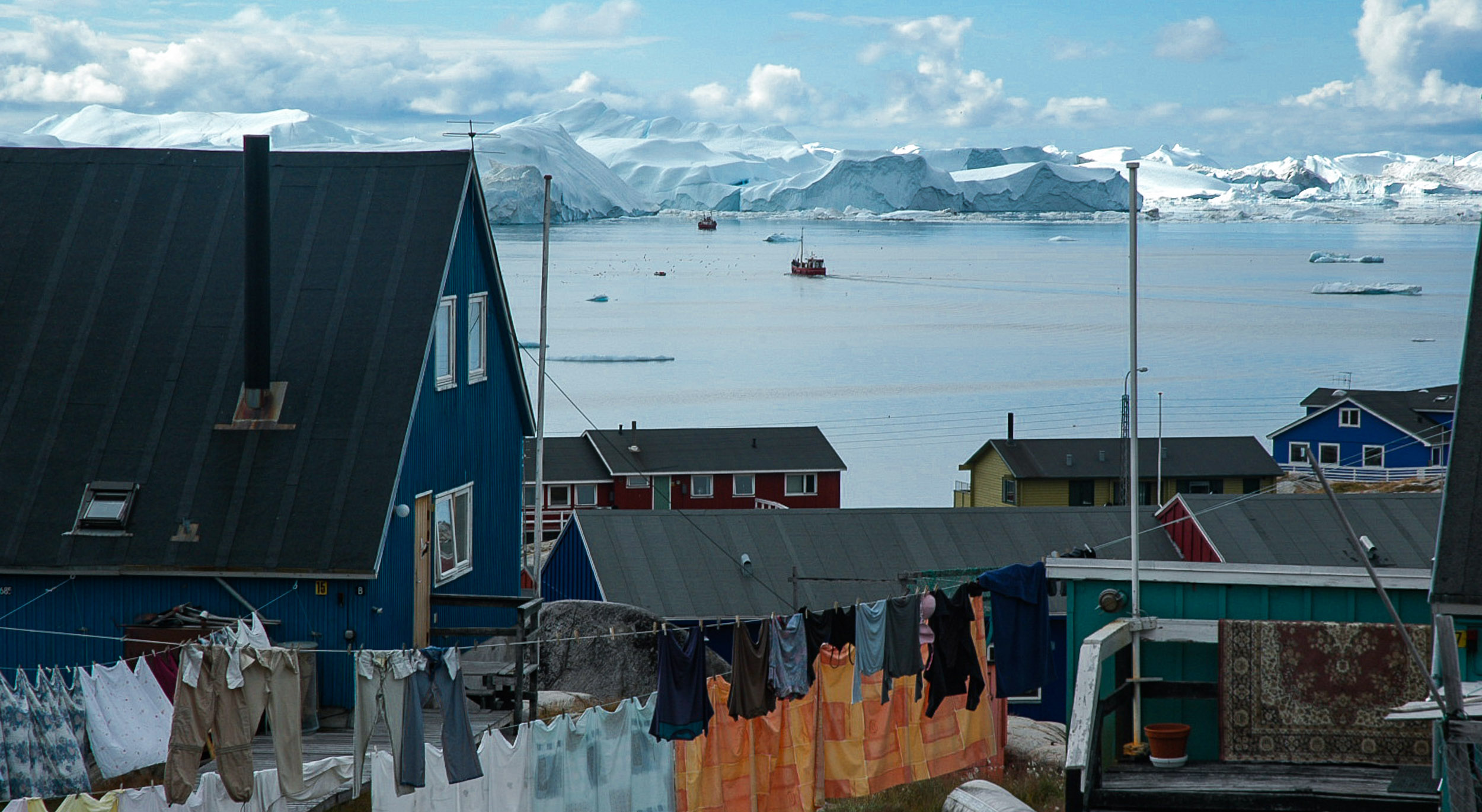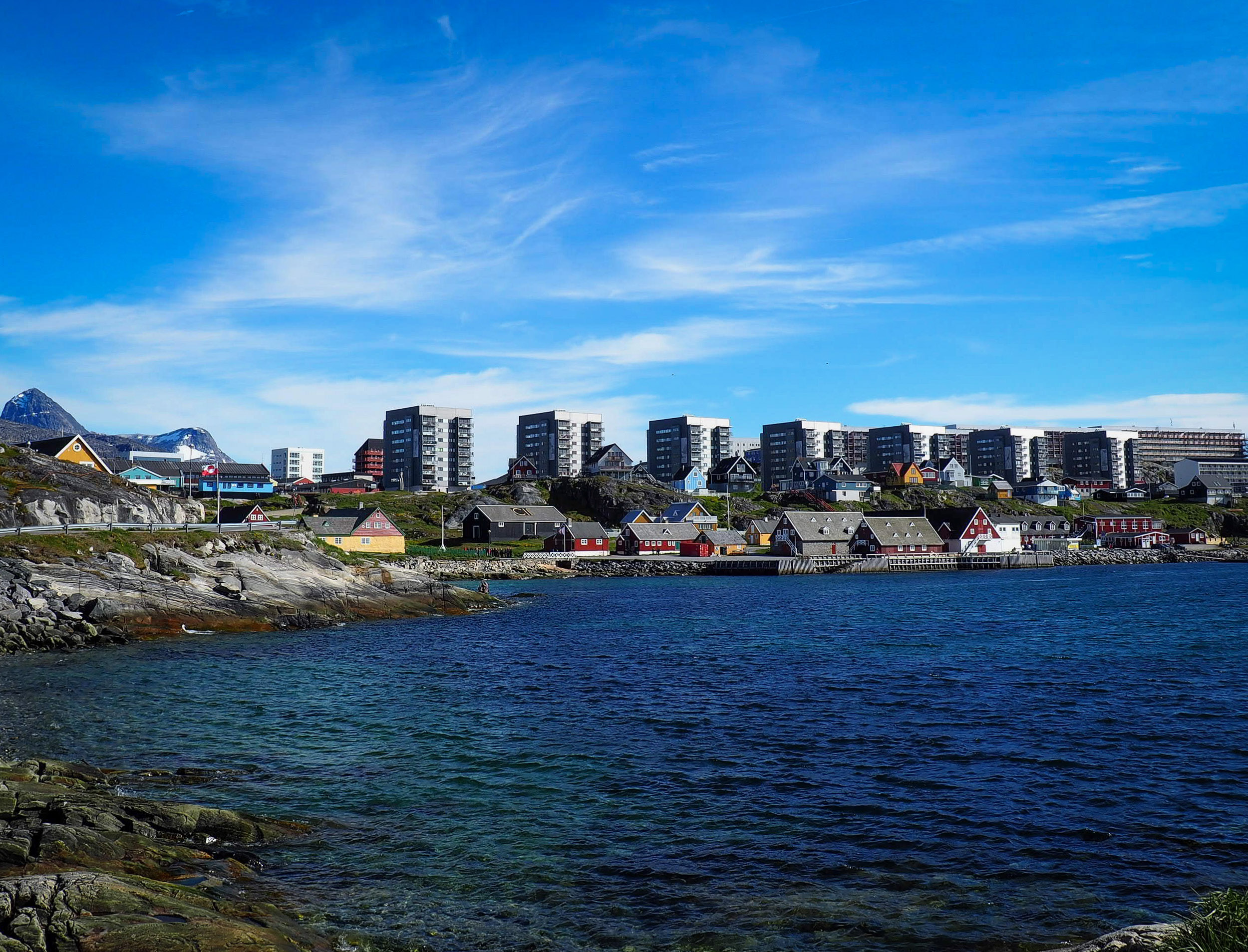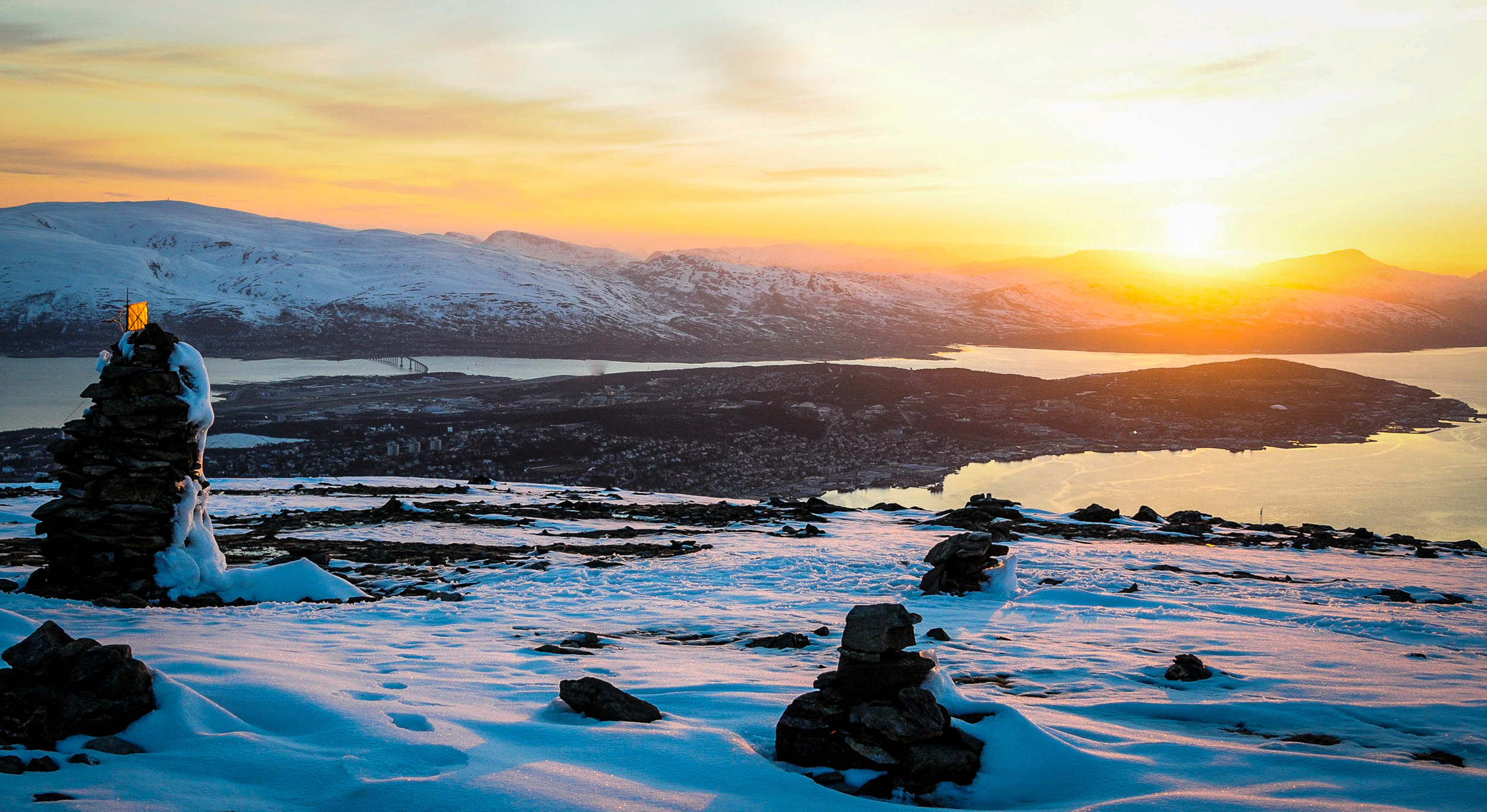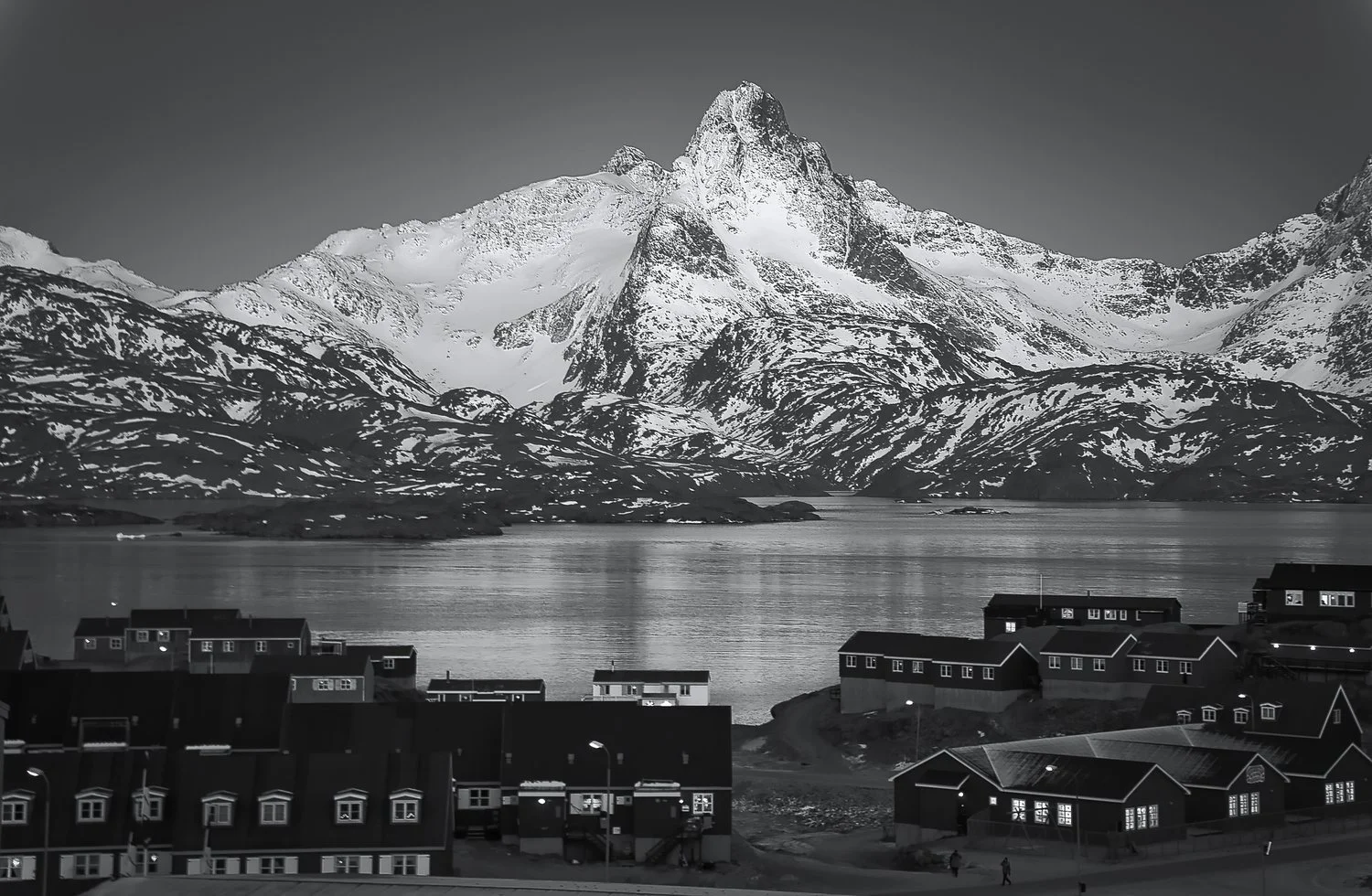Arcticness: Because It Is Home
INDIGENOUS / COMMUNITY
Writer: Ilan Kelman
Photographs: Kristjan Fridriksson, Inga Hansen, Gavin Zeitz, Linnea Nordström
September 2018
People and communities, lives and livelihoods. These define the Arctic, just as with all other populated areas on the planet. Is there, then, anything special, specific, exceptional or unique about the Arctic?
To the peoples in the Arctic, the answer is ‘of course’.
Because it is home.
Dr. Ilan Kelman is, amongst many other things, the editor of Arcticness - Power and Voice from the North. A book exploring opportunities and limitations in engaging with the Arctic under change, and the Arctic peoples experiencing the change, through the lens of understanding Arcticness - that is, what the Arctic means to Arctic peoples socially and physically.
As Arctic literature is fond of stating, there is no single Arctic. Definitions abound, from being a region or place to being an idea or phenomenon. The Arctic is delineated by latitude, tree lines, national and subnational borders and indigenous territories, amongst many other. All these elements vaguely concentrate into the northern areas of Canada, Finland, Norway, Russia and Sweden along with all of Alaska, Greenland and Iceland.
Arcticness as a home
This is the Arctic as a place – and the Arctic as place. The Arctic is also characterised, perhaps more so, by its people. Depending on where boundaries are set exactly, the Arctic’s population is anywhere from approximately 4 million to approximately 13 million people. About 10% of Arctic inhabitants are indigenous, belonging to 40 different groups, examples of which are Sami, Inuit, Nenet, Yakuts and Aleuts. In some jurisdictions, such as Nunavut and Greenland, indigenous peoples are the majority. All Arctic areas have comparatively low population density.
Solstice in the Sami village of Guovdageaidnu / Kautokeino in Norway’s largest municipality of 9.704 km2 - home to 3.000 people. JONAA©Inga Hansen
Arctic indigenous peoples are partly defined by the way in which they were colonised from the south. Iceland is the only Arctic country without designated indigenous peoples. The other seven countries have never fully addressed their post-colonial legacy which included active suppression of indigenous languages and cultures, forcing nomadic peoples to settle, and taking indigenous children away from their families for the purpose of ‘education’ and ‘acculturation’.
As part of aiming to re-connect Arctic peoples and places, and to redress past mistakes, each post-colonial Arctic country apart from Russia has, to a large degree, settled land claims with Arctic indigenous peoples. The settlements occurred in different ways and in different time periods, with implementation, monitoring and enforcement still not fully functional in many instances.
The generational context adds complexity. The generation of leaders who grew up under colonialism and who negotiated the settlements are now in the process of retiring. They are giving way to a new generation of leaders who did not experience similar difficulties or frontline fights for autonomy and the recognition of indigenous cultures. They face other challenges, such as low educational attainment, high rates of substance use and abuse, and high suicide rates.
Winter in Siglufjorður, North Iceland. Home to 1.300 people. JONAA@Kristjan Fridriksson
They are also looking to connect to the world beyond their (mis)governing state through the internet and social media to define and re-define, and to be proud of, their indigeneity, their peoples and their places; that is, their Arctic. The battles are not over. Greenland’s independence is still a possibility. Racism against indigenous peoples remains. The peoples are not homogeneous groups, such as the Sami who have different livelihoods including reindeer herding and fishing, both and neither.
Non-indigenous Arctic peoples also represent the Arctic, not just Icelanders but also those born and/or living in the north but without an Arctic indigenous heritage. One class of Arctic peoples, most notably in Scandinavia, comprises immigrants from around the world, including refugees, who fully settled in the Arctic and who are now raising first-generation, Arctic-born families with diverse, international heritages.
Arctic imaginaries, Arctic realities and their intersections in and outside of the Arctic pervade numerous historical, contemporary and future discussions. From the establishment of Arctic peoples to exploration and colonisation from the south to re-establishing sovereignties and Arctic peoples’ control over themselves, Arcticness displays tangibility and ephemerality. Meanwhile, non-Arctic peoples try to wrest control and make Arcticness relevant for themselves, from the construction of ‘last-chance’ tourism to tropical countries seeking observer status at the Arctic Council.
Non-indigenous Arctic peoples also represent the Arctic, not just Icelanders but also those born and/or living in the north but without an Arctic indigenous heritage. One class of Arctic peoples, most notably in Scandinavia, comprises immigrants from around the world, including refugees, who fully settled in the Arctic and who are now raising first-generation, Arctic-born families with diverse, international heritages.
Within this Arctic rainbow, what is the Arctic? How do Arctic peoples relate to their places? The ways include living, livelihoods, environments and movements. In many locales, movement means the typical commute by private or public transport to a nine-to-five office job. In many other locales, it is the more typical subsistence hunting, conversing with the wind, feeling the sea, traipsing the land and traversing the ice.
Water (solid and liquid) and wind flow, bringing with them life and death. The Arctic peoples flow with them. Movement, survival and thriving are choreographed within the elements and within the colours of the seasons: blue, grey and white melding with brown, green and splashes of colour in summer flora and fauna. The ever-changing kaleidoscope of weather and skies, of animals and oceans, of plants and the Earth, creates Arctic flows and ebbs.
Transitions and boundaries are prominent but fuzzy. Snow melds into land shifts to water becomes ice, drifting lazily under the dazzling dome of the summer sun and the scintillating stars of the wild winter. When the ice roads thaw making transport difficult, inland communities are spoken of as being landlocked. When the ocean is too rough for boats and the wind is too dangerous for planes, island communities are seen as being entrapped.
What vocabulary suggests being icelocked? The ice can be too thin on the water or too crevassed on the land, or just too slushy everywhere. The transition between seasons can be harsh when the land-ice and sea-ice mixtures do not permit safe transport. Then, one’s Arctic place becomes evident, as an islander or not, as someone who enjoys being indoors or not.
Movement and entrapment mean that Arctic placeness is not contentedly fixed. In any case, the glaciers, the ice, the snow, the water and the wind are always in motion. The rivers and the seas emote ripples and waves. The tides breathe for the water and the wind for the air. Coasts erode and accrete—with both ice and sediment.
Greenland’s capital Nuuk. Home to 18.000 people. JONAA©Gavin Zeitz
Arctic changes are expressed in other ways. From colonisation to self-determination, the Sami have created their parliaments, referenda supported autonomy for Greenland and Nunavut, and Russian regions and territories have various levels of self-governance. Exceptionalism identifies many Arctic place traits—including the internationally unique Svalbard treaty and the central Bering Sea having its ‘donut hole’ which is an enclosed polygon of international waters surrounded by territorial seas.
The scale of Arctic territories is sometimes forgotten. From Murmansk to Chukotka, the time difference across Russia is nine hours. Alaska has only two time zones, an artificial construction, but as the largest American state more than twice the area of its nearest rival, it is almost as wide and as tall as the entire contiguous states. Ottawa–Iqaluit flights travel more than three times as far as the London–Edinburgh route and are still shorter than Greenland’s full north–south distance.
Current national borders across the Arctic are poorly reflective of indigenous cultures. The Sami are partitioned amongst four countries. Only modern politics draw a line between Alaska and Yukon. The Canada–Denmark dispute over Hans Island is meaningless for people who use the land, sea, ice and wind to live.
Many of these Arctic placeness discussions are characterised by islands and archipelagos including the Aleutians, Hans Island, Greenland, Iceland and Svalbard. Nunavut’s capital sits on Baffin Island rather than the mainland. Many of Norway’s principal Arctic settlements are on islands including Tromsø, Harstad and Hammerfest.
Island studies has evolved over the past generation, exploring the natures and personalities of islands, island communities and islanders. Much debate and critique has centred around what it means to be an island or an islander, defining and examining the essence of islandness. These and similar questions and explorations have emerged for the Arctic, Arctic communities and Arctic peoples.
Thus, we generate and query the term Arcticness through the chapters in the book.
Longyearbyen, Svalbard. Home to a little over 2000 people and the world’s northernmost settlement with more than 1000 permanent residents. JONAA@Linnea Nordstrom.
Arcticness as a context
Phrases other than Arcticness are feasible. The term ‘islanders’ questions why ‘Arcticers’ does not exist, instead referring to Arctic peoples along the same lines as island peoples. Arctic provides both a noun and an adjective, with other terms such as Arcticesque and Arcticite not being considered, appearing both awkward and vapid, even platitudinous, trying to construct something Arctic which mirrors little. Translation difficulties, particularly into Arctic languages, would also result in these artificial constructions.
Yet artificiality itself is not necessarily disingenuous or disadvantageous. Humans have a right and a need to create ideas regarding their places, their movements, their livelihoods, their peoples, their environments and their homes. The challenge and opportunity, as with Arcticness, is whether or not the artificial creation has real and useful meaning.
We should not Arcticise for the sake of finding, generating or discussing Arcticness. Where potential exists for substantive idea and action, it deserves examination. This is the case with Arcticness.
Arctic imaginaries, Arctic realities and their intersections in and outside of the Arctic pervade numerous historical, contemporary and future discussions. From the establishment of Arctic peoples to exploration and colonisation from the south to re-establishing sovereignties and Arctic peoples’ control over themselves, Arcticness displays tangibility and ephemerality. Meanwhile, non-Arctic peoples try to wrest control and make Arcticness relevant for themselves, from the construction of ‘last-chance’ tourism to tropical countries seeking observer status at the Arctic Council.
The authors in Arcticness recognise this gamut. They accept what they understand and do not understand, what they have and have not experienced. They have reached into their science and reached into their soul, writing from the head and writing from the heart. Their chapters show how Arcticness portrays and betrays the Arctic, its places, its peoples and its homes. Even when they do not come from the north, the authors seek its power and voice—to understand, learn about, explore, compare, apply and critique Arcticness. ▢
Climate change and globalisation are opening up the Arctic for exploitation by the world – or so we are told. But what about the views, interests, and needs of the peoples who live in the region? What about the myriad of other factors affecting the Arctic and its peoples?
Current national borders across the Arctic are poorly reflective of indigenous cultures. The Sami are partitioned amongst four countries. Only modern politics draw a line between Alaska and Yukon. The Canada–Denmark dispute over Hans Island is meaningless for people who use the land, sea, ice and wind to live.
Dr. Ilan Kelman http://www.ilankelman.org and Twitter/Instagram @IlanKelman is a Reader in Risk, Resilience and Global Health at University College London, England and a Professor II at the University of Agder, Kristiansand, Norway. His overall research interest is linking disasters and health, including the integration of climate change into disaster research and health research.


























